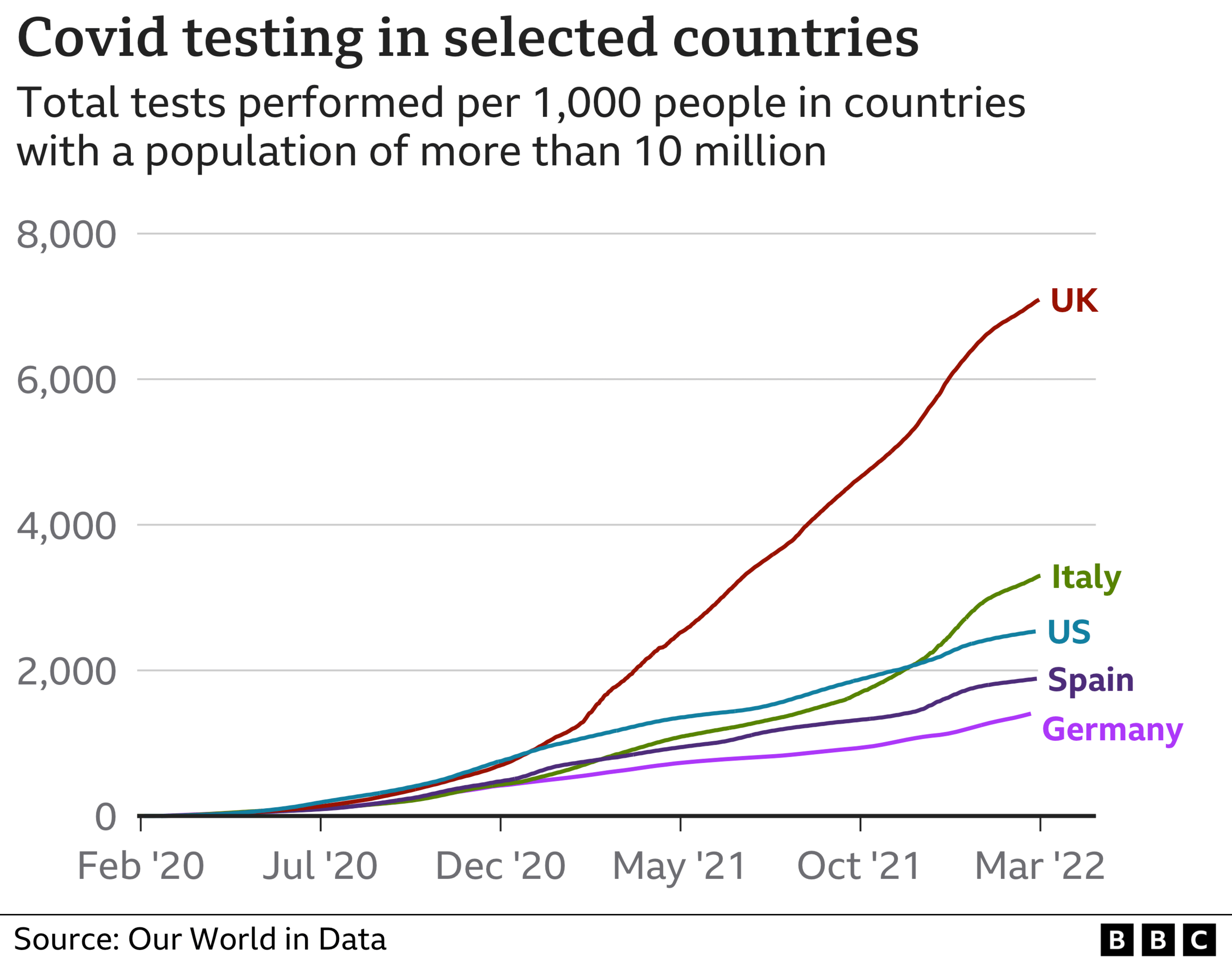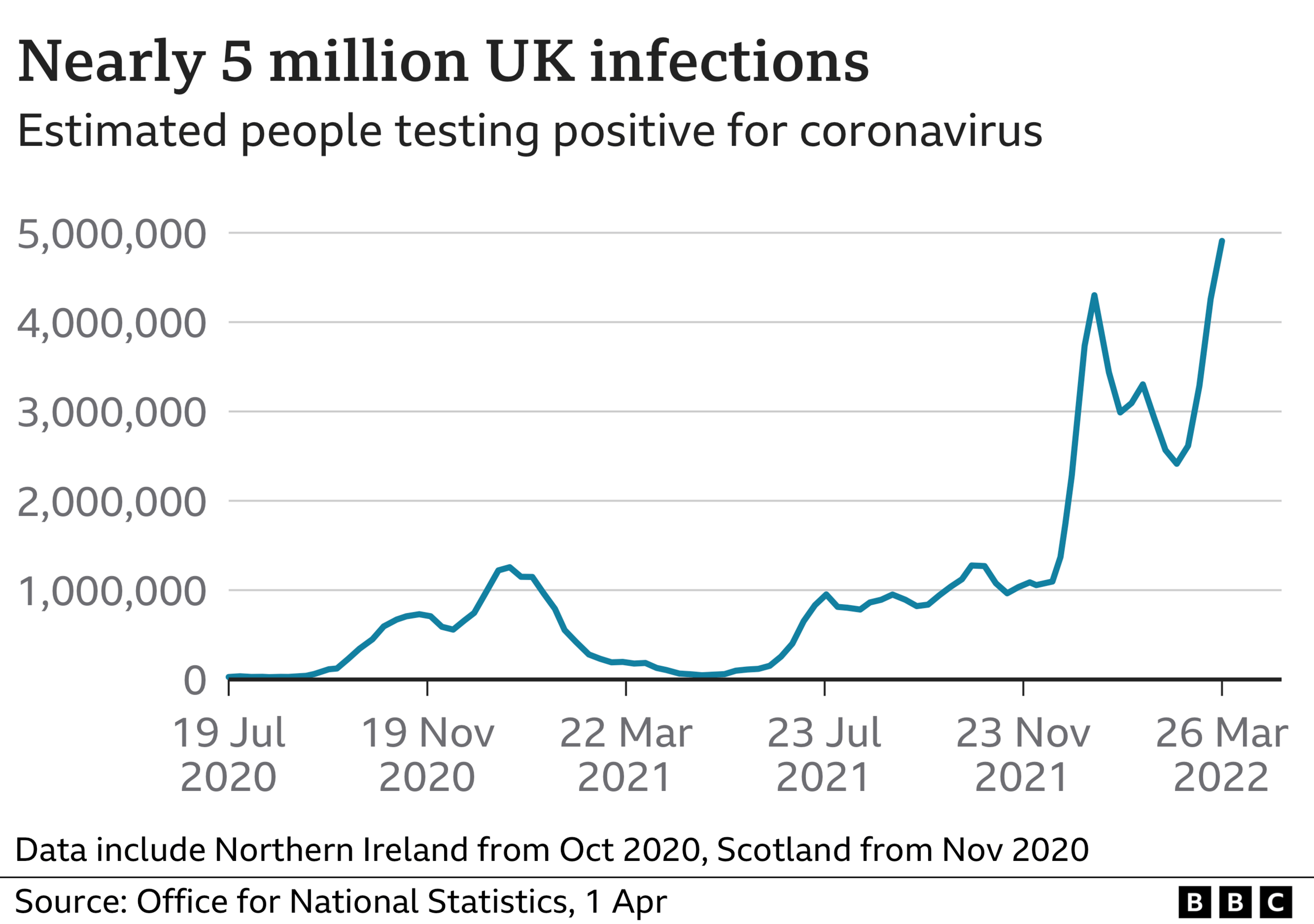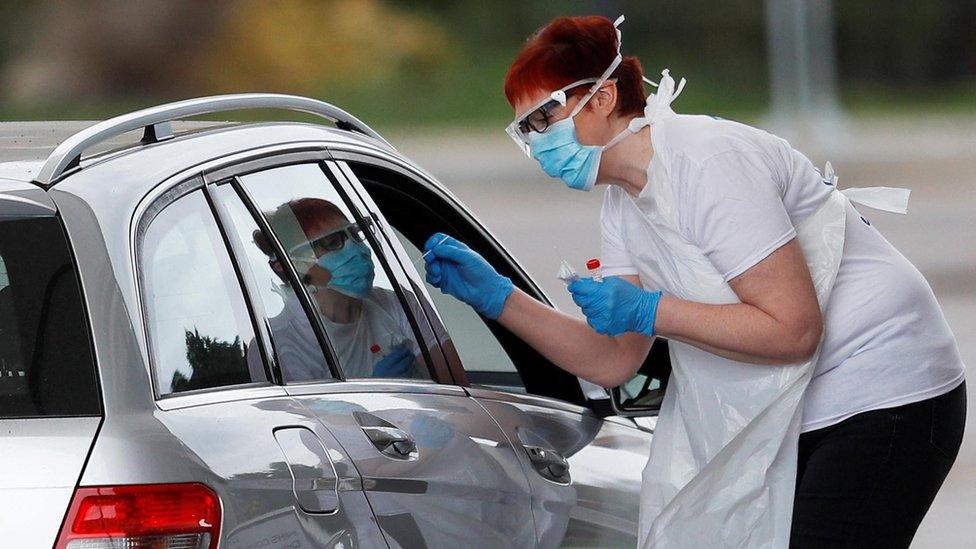Covid: Infections are sky high so why stop testing?
- Published

Testing for Covid has become a way of life for so many.
Since the start of the pandemic, nearly 500 million tests have been logged - and no doubt millions more taken at home and never recorded.
In fact, no other big country in the world has tested on the same scale.


But now it is coming to an end in England. Friday marks the dismantling of almost the entire testing infrastructure. The rest of the UK will follow later in the spring and summer.
Gone are the local testing centres, set up in car parks, community halls and shopping centres. At one point there were more than 800.
Gone are the free lateral flow tests people could order online or pick up from pharmacies and High Street locations.
Instead, only a strictly defined group will be entitled to free tests - and in most cases, only then if they have symptoms.
It includes:
1.3 million people with weakened immune systems, so they can be given drugs to reduce the risk of serious illness developing
hospital patients to diagnose their condition and tailor their treatment
health and care staff to reduce the risk of them spreading it to vulnerable people
The rest of us will have to pay for them - with prices starting at £2 per test.
The guidance now asks people to try to stay home and avoid contact with others if they have symptoms, including a high temperature.
Concerns remain despite virus 'being defanged'
The logic is it is time to treat Covid like other respiratory illnesses, such as flu, as the virus has been defanged by vaccination.
And certainly the number of deaths being caused this winter has been in line with what would be expected during a bad flu season.
What's more, charging is something many other countries have already introduced to some extent.
But the move naturally raises concerns. Even the government's chief scientific adviser, Sir Patrick Vallance, has warned it could lead to increased transmission.
And while the government is providing extra protection to the 1.3 million defined as having a weakened immune system, there are still plenty of others with health conditions and frailties who argue they are at increased risk and should qualify for free tests.
Meanwhile, more than 300,000 people in England have signed a petition, launched by campaign group Keep Our NHS Public, urging the government to continue offering free lateral flow tests to all.
Such calls are understandable - especially when infection levels remain so high. The most recent data from the Office for National Statistics shows nearly five million people in the UK were infected last week - by comparison the flu season is normally coming to an end at this point.


This in turn has pushed up hospital admissions. The total in hospital is close to the peak in the very first wave. This is putting significant pressure on the NHS.
But that only tells part of the story. Most of them were admitted for something else but just happen to have the virus.
Some will still be ill with Covid but others will not be - a perfect illustration of how the risk the virus presents has diminished.


In the end, the decision on testing has come down to a trade-off. Given the risk Covid now presents and the seeming inability of anything short of a ban on indoor mixing to make any tangible impact on the spread of the virus, the government has decided the money will be best invested elsewhere.
This was a point made by England's chief medical officer, Prof Sir Chris Whitty, when he addressed the Local Government Association last week.
In the end, he said, it came down to a judgement for ministers to make.
Nearly £27bn has been spent on testing and tracing in England, since the start of the pandemic, a huge sum that could go a long way if diverted elsewhere.
To put it into context, it is similar to what is budgeted for GP care, four times what is spent on healthy lifestyle programmes to tackle things such as obesity and smoking or enough to tackle the backlog in hospital operations.
The public, says Prof Allyson Pollock, a public health expert at Newcastle University, has been "conditioned" into thinking mass Covid testing is needed, while the NHS and patients "go without the resources they need".
Why testing impact was always compromised
In assessing the decision to scrap free testing for most, it is worth considering two other points.
First, the surveillance programme run by the Office for National Statistics will continue, albeit in a slightly slimmed down form.
The UK is one of the few countries in the world to randomly test people in the community like this, so it will still be well placed to keep an eye on how the virus is spreading.
This survey along with the testing of hospital patients will also allow scientists to monitor variants.

And second, the impact of mass testing was always compromised because not everyone came forward for testing.
Up until the turn of the year, the testing system was picking up about half of the estimated total number of infections. In recent weeks, that has dropped to under a quarter.
There are many reasons behind this. Undoubtedly a major one has been many people cannot afford to isolate because of the lack of sick pay and insecure employment.
There will also be some who are testing positive on lateral flow tests and simply not registering them.
But the fact remains many people are already using their own judgement about what to do when they fall ill. Now nearly all of us will have to.
Follow Nick on Twitter, external.
Read more from Nick.
Related topics
- Published5 July 2023

- Published5 July 2022

